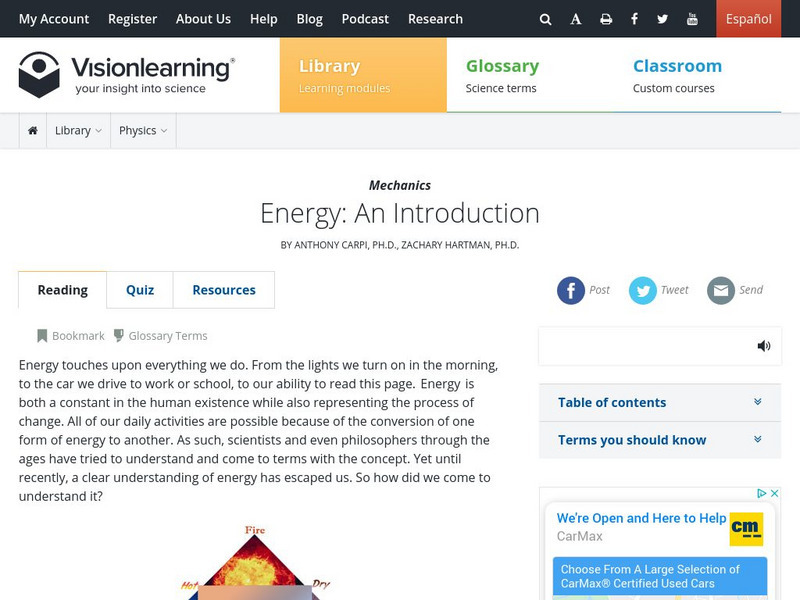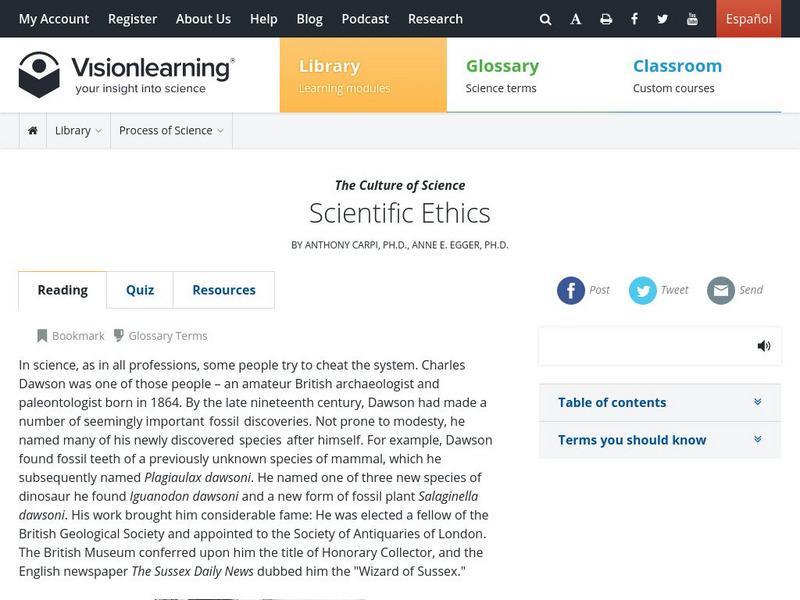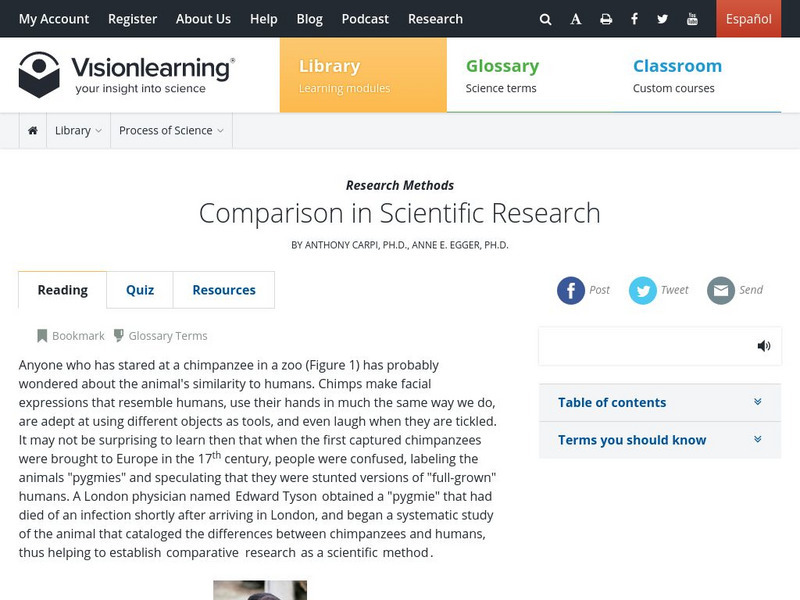Hi, what do you want to do?
Vision Learning
Visionlearning: Earth Cycles: The Phosphorus Cycle
An introduction to the significance of phosphorus in regards to living organisms. An explanation of the phosphorus cycle is discussed in different scenarios.
Vision Learning
Visionlearning: Atmosphere and Oceans: Composition of Earth's Atmosphere
An explanation of the different parts of the atmosphere and how pressure and temperature changes at different altitudes.
Vision Learning
Visionlearning: Exponential Equations in Science: Constant E, Limits to Growth
An introduction to exponential equations that describe growth and decay over time. Variables and constants in the equation are explained.
Vision Learning
Visionlearning: Wave Mathematics: Trigonometric Functions
Learn how to use trigonometric functions to study waves.
Vision Learning
Visionlearning: Mechanics: Energy
Definitions of various forms of energy are presented along with a brief scientific history of energy related concepts.
Vision Learning
Visionlearning: The Process of Science
An introduction to scientific process and thinking like a scientist.
Vision Learning
Visionlearning: Culture of Science: Scientists and the Scientific Community
A look at the human side of science. Take a look at how background and motivation can lead to different perspectives, discoveries, and progress in science.
Vision Learning
Visionlearning: Culture of Science: Scientific Ethics
An explanation of why ethics play an important role in science and research.
Vision Learning
Visionlearning: Creativity in Science: How Scientists Decide What to Study
Read to find out how creativity has played a significant role during experimentation.
Vision Learning
Visionlearning: Practice of Science: Introduction to Research Methods
An explanation indicating that there is more than one method of scientific research.
Vision Learning
Visionlearning: Research Methods: Experimentation in Scientific Research
An explanation of scientific research using variables and controls.
Vision Learning
Visionlearning: Research Methods: Description in Scientific Research
Specific examples are used show the importance of good description in scientific research since data and numbers are not always available.
Vision Learning
Visionlearning: Research Methods: Comparison in Scientific Research
Pros and cons of the comparative method of research are described. Specific examples are used to show how and why the comparative method may be used when researching.
Vision Learning
Visionlearning: Research Methods: Modeling in Scientific Research
Explanation of how physical and conceptual models can be used during scientific research. Several examples are given ranging from modeling with Legos to computer modeling.
Vision Learning
Visionlearning: Data: Data Analysis and Interpretation
An explanation of data from collection to analysis. Includes a discussion of how the same data may be interpreted various ways by different individuals.
Vision Learning
Visionlearning: Data: Uncertainty, Error, and Confidence
An explanation of how errors may affect data that has been collected for experimentation. Some examples are given.
Vision Learning
Visionlearning: Data: Using Graphs and Visual Data in Science
An explanation of how data can be turned into visual forms which can help people comprehend information easier than observing numbers.
Vision Learning
Visionlearning: Understanding Scientific Journals and Articles
Explanation of the difference between popular media and scientific journals. Includes examples.
Vision Learning
Visionlearning: Scientific Communication: Utilizing Scientific Literature
A brief history of scientific literature, followed by different ways scientific literature can be used.
Vision Learning
Visionlearning: Scientific Communication: Peer Review in Scientific Publishing
A description of what peer review is and why it is important in scientific publishing.
Vision Learning
Visionlearning: Reactions and Changes: Chemical Reactions
Explanation of Noble gases and of how atoms attempt to fill their outermost valence shells for stability.
Vision Learning
Visionlearning: Energy in Living Systems: Energy Metabolism I
Detailed explanation of how food is broken down and metabolized in our bodies to be used for energy.
Vision Learning
Visionlearning: Evolutionary Biology: Taxonomy: Nomenclature
An explanation of how living organisms are named and the importance of naming them accurately.
Vision Learning
Visionlearning: Plate Tectonics: The Origin of Plate Tectonic Theory
Discover Alfred Wegner's ideas relating to continental drift and seafloor spreading which are both evidence to the concept of plate tectonics.




























